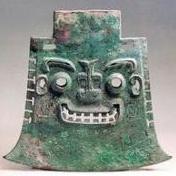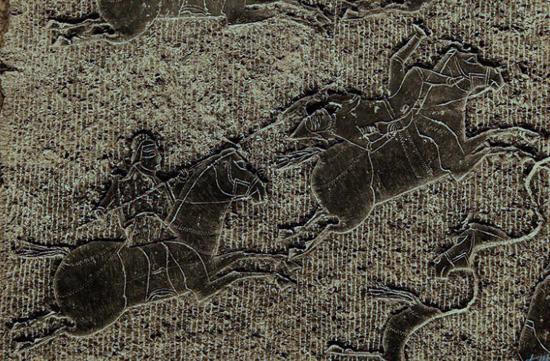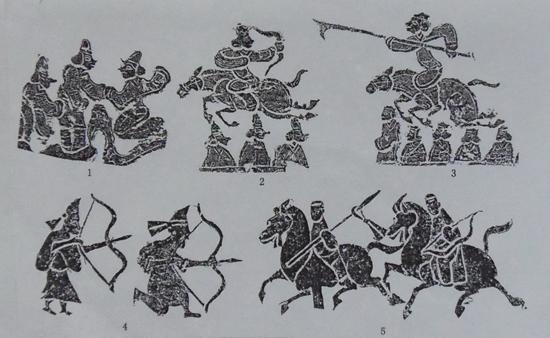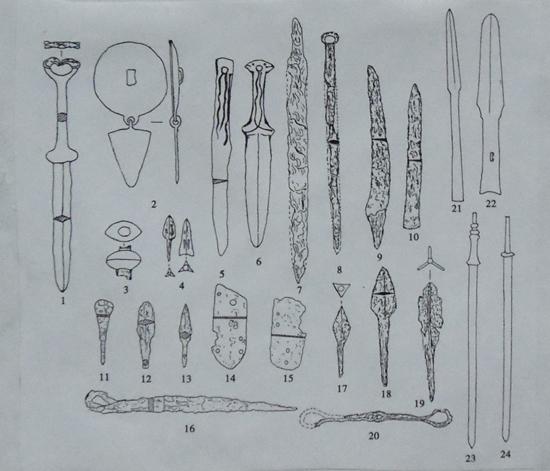-
Posts
937 -
Joined
-
Last visited
-
Days Won
10
Everything posted by AIEND
-

Look of the athenian champions
AIEND replied to Silier's topic in Game Development & Technical Discussion
Although these Scythians carried clubs and axes, I don't think that would give them the kind of authority that fasces had in the hands of Roman consuls. After all, they are slaves, and they are often just verbal threats, but they dare not use force against the citizens of Athens. After all, Athens is a democratic country. I think they are more like security/police than gendarmerie, maybe can improve the environmental safety of citizens' daily life, improve labor efficiency through a halo? But if so, most civilizations actually have this kind of role, and it would seem odd to just give it to Athens. My feeling is that the Scythian archers can be eliminated simply because their job is not to appear on the battlefield. -

Look of the athenian champions
AIEND replied to Silier's topic in Game Development & Technical Discussion
Iphicrates should have changed the hoplite to use longer spears and lighter shields, thus becoming the prototype of later Macedonian pikemen. This type of soldier and the later Hellenistic pikemen were actually lighter than the hoplite, should not walk slower than the old hoplite, but should be more brisk, with more emphasis on using the length of the weapon to attack rather than relying on shields to resist. The game currently casts pikemen as sluggish meat shields, rather than soldiers who abandon protection for a more aggressive attack. On the other hand I would prefer Athens to have a kind of ordinary citizen javelinmen rather than mercenaries or champions. Perhaps the reform could be to turn the Athenian spearmen into pikemen? Marines may be more effective on ships than on land, consider having marines stationed on ships to provide buffs to warships,should be used to highlight Athens' naval superiority. -
Does not require buildings, should get Metal trickle as a faction trait, just like Ptolemy got Food trickle.
-

faction Xiongnu 2.0 (reconsiderations) gameplay
AIEND replied to Lion.Kanzen's topic in Rise of the East
Xiongnu does not build walls and watchtowers, but may use camps surrounded by horse and ox carts as temporary fortifications. -

faction Xiongnu 2.0 (reconsiderations) gameplay
AIEND replied to Lion.Kanzen's topic in Rise of the East
There is no historical record of this. -

faction Xiongnu 2.0 (reconsiderations) gameplay
AIEND replied to Lion.Kanzen's topic in Rise of the East
Combined with cheaper archers, Xiongnu's most important weapon is the bow and arrow. Xiongnu has very good horse archers, among which the "射雕者Shediaozhe" (These people have excellent arrow skills and can hit flying eagles.)is particularly accurate. According to records, once the Han army sent dozens of cavalry to pursue three Shediaozhe", all of them were shot dead. In the end, Liguang led a hundred cavalry in pursuit, shot two of them himself, and captured one. -
This is a metaphor, saying that the Western countries are slaves of Xiongnu means vassal relationship. Xiongnu believed that these countries were their own vassals and had to pay taxes.
-
This is an official position established by Xiongnu, where 僮仆Tongpu means slave. Xiongnu regarded the countries of the Western Regions as his own slaves, so he set up this official position to govern. Later, with the Han Dynasty's attack on the Xiongnu, Xiongnu lost control of the Western Regions, and this official position also disappeared.
-
The xiongnu itself has mixed quite a few tribes, so there is no need for those. The "僮仆都尉Tongpuduwei" set up by Xiongnu is to levy taxes from the countries of the Western Regions instead of conscription.
-
Judging from the brick carvings and stone carvings found in the Han Dynasty, the Xiongnu people did not like to dismount and fight. The main weapons for foot combat were bows and arrows, and spears (without shields) were sometimes used.
-
The technology of the granary and warehouse can be put on the ox cart, Xiongnu's yurt is only a military camp for training women by the way, and the technology originally researched from the house can be cancelled.
-
Can be more differentiated: 1. Like the Huns in Age of Empires 2, no housing is required for population support. 2. Except for the wonders, all buildings can be packaged. 3. The functions of warehouses, barracks, and stables can all be completed by yurts (of course, this building can use the model of the current barracks). 4. Shamans, champions, and battering rams are trained by the big yurt. 5. The corral automatically trains cattle and sheep. 6. The bullock cart for packing the yurt and the bullock cart for storing resources are separated. 7. In addition to hunting and slaughtering animals, Xiongnu's soldiers and women were inefficient at logging, mining for stone and gold and could not farm. But Xiongnu can do these jobs with slaves captured from settled civilizations. 8.Cavalry costs less, infantry only needs archers, spearmen and champion archers.
-
I tried the Scythians on the Delenda Est mod and got a rough idea of the structure tree. Excluding my not accustomed to the separate design of soldiers and civilians in this mod, as I said before, there are too many types of buildings and not enough emphasis on cavalry, which makes me feel like I'm not playing a nomad.
-
But this way the dog house looks a lot like a corral. Isn't it more convenient to train the dog directly with a corral with a suitable size?
-
Why fence? Aren't domestic dogs generally tied on a leash?
-
Automatic training of bullock carts loaded with yurts?
-
It would be more interesting if the nomadic factions were more unique in their building system. Because there is no farmland, the nomadic faction needs more energy to solve the production of food, and the corresponding reduction in the cost of construction means that the nomadic faction can devote more resources to training the army.
-
There is a problem, the large yurts that replace the civic center are not arranged like this. He will not be placed directly on the car, but placed on the ground like a smaller yurt. If it needs to be moved elsewhere, it will be disassembled like a small yurt and then transported on a two-wheeled bullock cart.
-
In fact, the model used in the barracks and warehouses is the yurt. Why should the same building be split into three?
-
Modern Uzbeks and Tajiks would look a lot like this if they had big beards, but because of Soviet-era secularization, men in Central Asia now shave rather than grow beards.
-
Xiongnu's building system is too complicated, I designed the Mongol faction in an Age of Empires 3 mod. Nomad factions don't need population buildings, they should be the same as the Huns in Age of Empires 2. There is also no need for special barracks, warehouses, and granary buildings, they should be integrated. A two-wheeled bullock cart that can be used as a mobile warehouse is also necessary.
-
These should be Sogdians.
-
统万城Tongwancheng was built during the Sixteen Kingdoms period, when the Han Dynasty had already perished. The predecessor of the 夏Xia Kingdom was the Xiongnu tribe, which was a vassal of the 晋Jin Dynasty, and also controlled a part of the Chinese population, so it could use Chinese technology to build the city wall.
-
The Han Dynasty did not need to copy Xiongnu at all. China had cavalry in the Shang Dynasty, and at the beginning of the reign of Emperor Wu of the Han Dynasty, 40,000 to 50,000 cavalry could be deployed in frontier fortresses. The scale of the cavalry in the Han Dynasty was restricted by economic reasons, that is, the scale of raising horses. During the reign of Emperor Wu of the Han Dynasty, the number of military horses was increased to 400,000. The highest number of cavalry dispatched was recorded at 180,000 at one time (the formation of an excessively large cavalry team also caused great damage to the national economy of the Han Dynasty). In addition, before Han Wudi started his war against Xiongnu, because there was no need to go deep into the steppe to fight, China had almost no army composed purely of cavalry, usually combined troops, and cavalry only made up a small part of it. During the Warring States period, Li Mu, a general of the Warring States Period, defeated Xiongnu with a force consisting of chariots, infantry and cavalry. In the war mode from the Warring States Period to the early Western Han Dynasty, the infantry was very strong, and the cavalry could not attack the infantry array head-on. The task of frontal attacking the infantry could only be completed by the chariot. Therefore, the army often mixed the cavalry and the chariot, and let the cavalry cooperate with the chariot. , or perform harassment and pursuit missions.








